How does Bikram Yoga work?
Bikram Yoga offers a challenging and stress relieving workout for the entire body. Regular practice can help you maintain your health and become less prone to illness and injury. It has a positive effect on your overall sense of well-being.
The Bikram series caters to all the systems of the body. Regular practice ensures:
- strengthening of the immune and cardiovascular systems
- increase of flexibility in the spine and relief from back and neck pain
- development and strengthening of the entire muscular system
- improvement in posture
- weight regulation and control
- increase in concentration, balance and willpower
- stress relief
The 26 postures
1. Pranayama (Deep Breathing)

- Expands lung capacity
- Increases relaxation and concentration
- Lowers blood pressure
- Detoxifies the body
- Provides the body with oxygen
2. Ardha Chandrasana Pada Hastana (Half Moon)

- Opens the shoulder area
- Helps with neck and shoulder tension
- Reduces pain in the lower back
- Trains stomach, butt and thigh muscles
- Increases spine flexibility
- Stimulates the glandular system, intestine and kidneys
- Helps with sciatic problems
3. Utkatasana (Awkward)
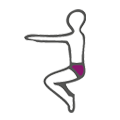
- Works the entire muscular system
- Opens the pelvis
- Develops leg and butt muscles
- Improves damaged postures
- Stimulates intestinal activity
- Reduces joint and sciatic problems
- Stimulates internal organs, particularly the liver and pancreas
4. Garurasana (Eagle)

- Opens the 14 main joints
- Stimulates the central nervous system
- Improves equilibrium and balance
- Prevents or reduces varicose veins
- Strengthens the immune and lymphatic systems
5. Dandayamana Janushirasana (Standing Head to Knee)
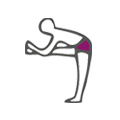
- Strengthens leg and back muscles
- Encourages will power and concentration
- Regulates blood sugar level (in the case of diabetes)
6. Dandayamana Dhanurasana (Standing Bow)

- Works the cardiovascular system
- Opens the diaphragm
- Increases spine elasticity
- Improves strength and balance
- Helps regulate prostate glands, more specifically ovaries
- Opens the shoulder area, good for neck and shoulder tension
7. Tulandandasana (Balancing Stick)
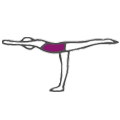
- Increases blood flow, especially to the heart blood vessels
- Prevents heart diseases
- Stretches the spine
- Prevents varicose veins
- Strengthens legs muscles
- Stimulates the pancreas, spleen, liver and nervous system
8. Dandayamana Bibhaktapada Paschimottanasana (Separate Leg Stretching)

- Stimulates blood circulation to the brain, central nervous system and adrenal glands
- Loosens the lower back
- Regulates the blood sugar level
- Boosts mood and morale
9. Trikanasana (Triangle)
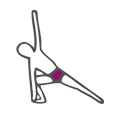
- Intensively trains the cardiovascular system
- Increases hip joint flexibility
- Stimulates the kidneys, thyroid and adrenal glands
- Tightens leg and butt muscles
- Regulates the hormone level
- Works all the muscle groups simultaneously
- Helps with constipation, hypotension and menstrual disorders
10. Dandayamana Bibhaktapada Janushirasana (Standing Separate Leg Head to Knee)

- Trains the abdominal muscles
- Regulates blood sugar level (in the case of diabetes)
- Stimulates intestinal activity
- Encourages a sense of balance
- Works against depression
11. Tadasana (Tree)
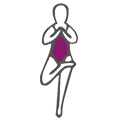
- Assists in maintaining good posture
- Corrects bad posture
- Increases hip and knee flexibility
- Alleviates abdominal tension
- Reduces back pain
- Works the gluteal muscles
- Good for circulatory problems and rheumatism
12. Padangustasana (Toe Stand)
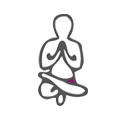
- Encourages balance
- Strengthens abdominal muscles
- Opens the pelvis and hip joints
- Works hip, knee and ankle joints
13. Savasana (Dead Body)

- Lowers blood pressure
- Slows down heart rate
- Quiets the mind
- Complete body relaxation
14. Pavanamuktasana (Wind Removing Pose)
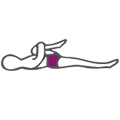
- Reduces back pain
- Improves flexibility in the hip joints
- Stimulates intestinal peristalsis
- Massages the digestive tract
- Regulates acid levels in the stomach
15. Bikram Sit-Up
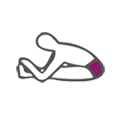
- Strengthens abdominal muscles
- Acts as a stimulant
- Detoxifying double exhale
16. Bhujangasana (Cobra)
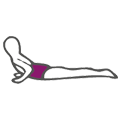
- Increases spine flexibility
- Encourages rich blood flow to the spinal nerves
- Works and tones back muscles
- Helps relieve back pain and arthritis
- Stretches the thoracic area relieving asthma
- Improves the function of internal organs
- Improves concentration and willpower
17. Salabhasana (Half Locust)
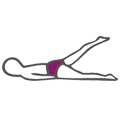
- in conjuction with cobra including:
- Effective in prevention and treatment of herniated discs and sciatica
- Firms the gluteal muscles
- Works and develops back muscles
- Increases spine flexibility
- Improves function of the liver and spleen
- Strengthens shoulder, arm and back muscles
18. Poorna Salabhasana (Full Locust)
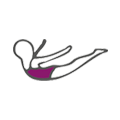
- Tightens abdominal muscles
- Firms the waist and buttocks
- Improves spine flexibility
- Strengthens back muscles
- Prevents lower back pain
- Helps with spinal disk and arthritis problems
- Relieves neck tension and menstrual disorders
19. Dhanurasana (Floor Bow)
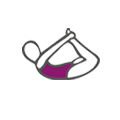
- Increases circulation to the heart and lungs
- Opens the diaphragm, increases lung capacity
- Opens the shoulder area, good for shoulder tension or stiff necks
- Strengthens all the back muscles
- Strengthens abdominal muscles and tightens the waist
- Improves kidney, liver and spleen functions
- Improves concentration and willpower, helps restore equilibrium and inner harmony
20. Supta Vajrasana (Fixed Firm)

- Helps with sciatica, gout and varicose veins
- Strengthens the abdominal wall, upper and lower legs
- Stretches calve muscles
- Increases flexibility in the lower back
- Stretches the diaphragm (good for asthma)
- Opens the hips
- Prevents back pain
21. Ardha Kurmasana (Half Tortoise)

- Helps with insomnia and migraines
- Increases relaxation and relieves stress
- Increases lung capacity
- Encourages blood flow to the brain
- Firms the abdominal wall and waist
- Increases flexibility in the pectoral girdle and works shoulder muscles
- Increases flexibility in the hip joints
22. Ustrasana (Camel)
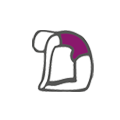
- Opens the rib cage and lungs
- Stretches the digestive tract
- Stimulates the nervous system
- Helps with bronchial problems
- Strengthens back and shoulder muscles
- Improves flexion of the neck
- Supplies the kidneys with blood
- Detoxifies the body
23. Sasangasana (Rabbit)

- Intensive spine stretch
- Increases blood circulation in the nervous system
- Strengthens back muscles
- Stimulates thyroid glands through compression, helps regulate metabolism
- Increases flexibility in the shoulder joints
- Helps with insomnia
- Boosts mood and morale
24. Janushirasana mit Paschimottanasana (Head to Knee with Stretching)
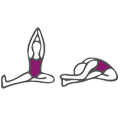
- Increases flexibility in foot, knee and hip joints, stretches the sciatic nerve
- Enhances kidney function
- Increases circulation to the liver, spleen and pancreas
- Stretches and strengthens the pelvic girdle, hips, shoulders and spine
- Stretches the Achilles tendon
- Encourages concentration and patience
25. Ardha Matsyendrasana (Spinal Twist)

- Increases hip and back flexibility
- Tightens the buttocks and shapes the waist
- Improves elasticity of the vessels, tissues and spinal nerves
- Opens the rib cage and bronchi
- Helps prevent slipped disc
- Alleviates pain in the lower back
- Massages and stimulates all the internal organs
26. Kapalbhati in Vajrasana (Blowing In Firm)

- Short and quick exhales detoxify the body
- Strengthens the abdominal wall and stimulates abdominal organs
- Energizes the body and clears the mind
- Enriches the body with oxygen
- Strengthens the circulatory and respiratory systems
- Helps regulate high blood pressure